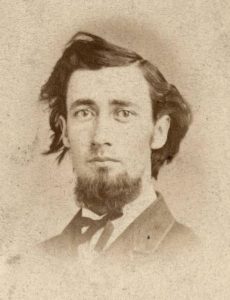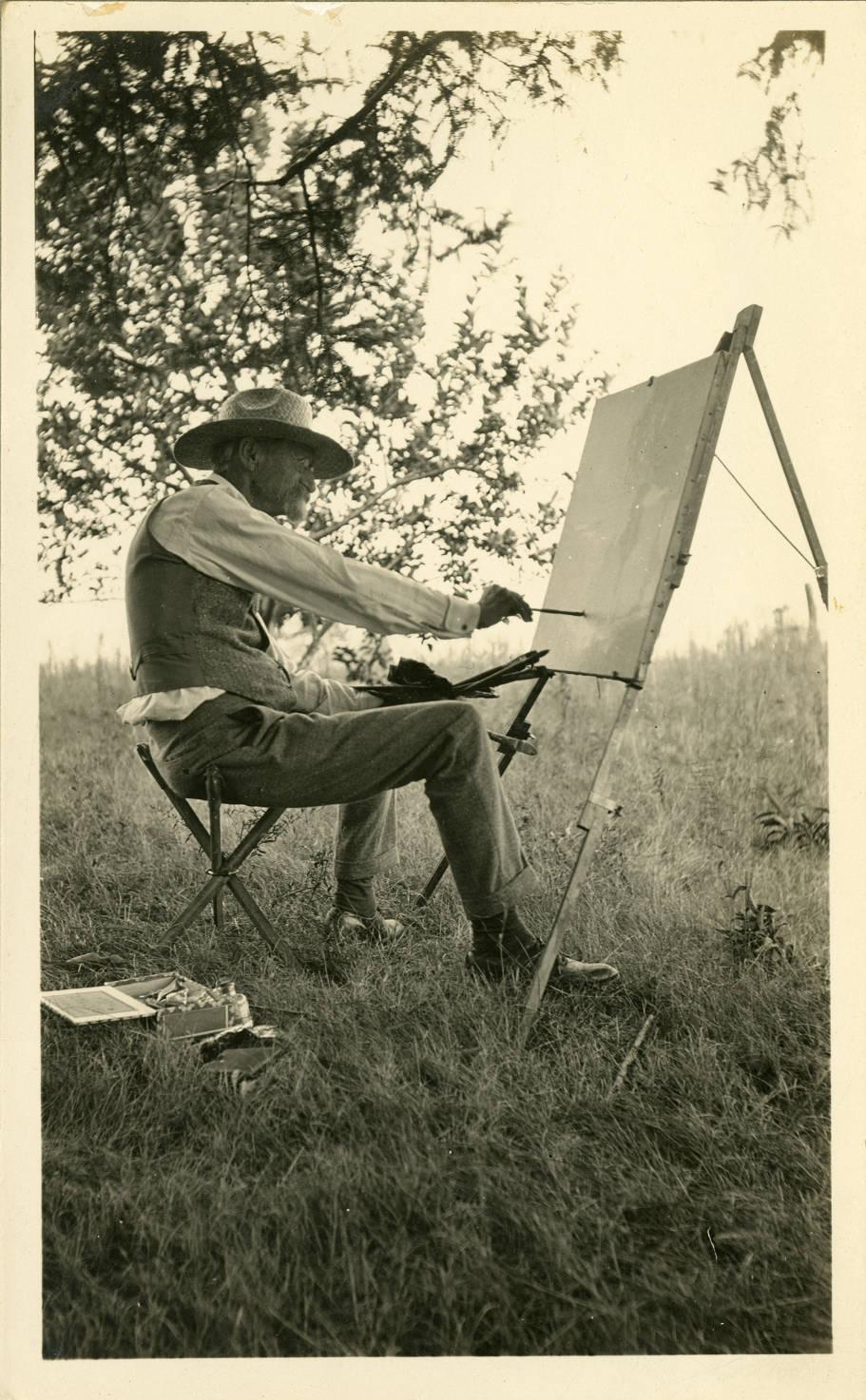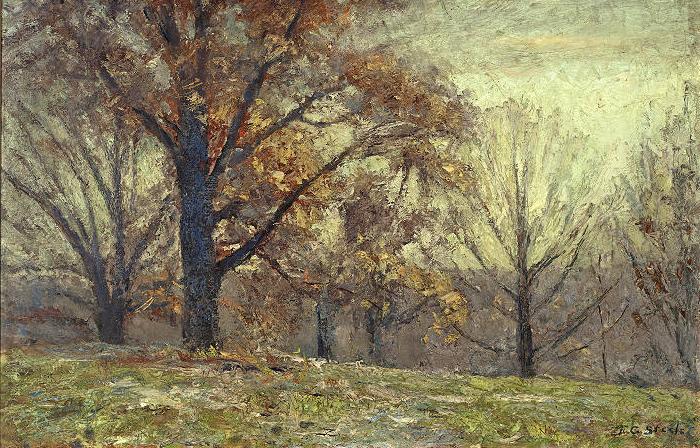
Photo info ...
Credit: Indiana Historical SocietyView Source
(Sept. 11, 1847-July 24, 1926). T. C. Steele was an Indiana artist and member of the of Impressionist painters. Born in Owen County, Indiana, he was educated at the Waveland Academy in Nashville, Indiana. In 1863, at the age of 16, he spent the summer studying privately with Joseph Tingley, a professor of natural sciences, at Indiana Asbury College (DePauw University).
Steele studied art in Chicago for a short time before starting a career as a portrait painter. He opened a studio in Indianapolis and is said to have survived the financial Panic of 1873 by painting signs for commercial buildings with poet , who became a lifelong friend. Steele later moved his studio to West Washington Street.
By 1880, Steele’s talent had drawn the attention and support of a group of Indianapolis businessmen, led by Herman Lieber, who sponsored Steele’s five years at the Royal Academy of Art in Munich, Germany. After one year of drawing under Gyula Benczun, the artist studied portraiture with Ludwig von Loefftz, winning a first-class prize in his final term.

Steele returned to Indianapolis and leased the Tinker House (Talbot Place) at 16th Street and Pennsylvania Avenue. There, he painted the portraits of those individuals who had sponsored his education abroad. For the next decade, Steele supported his family by teaching art and doing commissioned portrait work. Among his portraits are those of five Indiana governors.
joined Steele in 1891 to incorporate the Indiana School of Art at the northwest corner of Market Street and . In 1894, a Chicago exhibition of five Indiana painters was dubbed the . They were Steele, Forsyth, , , and . In 1895, Steele stopped teaching to devote his full-time work to painting and, in 1896, founded the Society of Western Artists with Adams and Forsyth.
Although commercial success came from painting portraits in Indianapolis, Steele’s overriding passion was creating landscapes. He was fascinated by the changing light and atmosphere he discovered in outdoor compositions. With Adams, he purchased “the Hermitage” in Brookville, Indiana, and spent summers painting landscapes.
He also painted in Vernon, Yountsville, Spencer, and Metamora. Outside of Indiana, he painted in Vermont (1887), Tennessee (1899), Oregon (1902), and California (1903). Steele continued to winter at Talbot Place for three years after his wife’s death in 1899. The site became the in 1902.
In his quest for new landscapes, Steele discovered Brown County and purchased 211 acres of wooded hills in 1907. He built the House of the Singing Winds and remarried that summer. Students and faculty from Indiana University, neighbors, and friends from Indianapolis all came to visit the famous Hoosier artist in his hilltop retreat.
In 1922, Steele became artist in residence and an honorary professor at Indiana University. Among the many honors he received, the two most notable were his election to the National Academy of Design in 1913 and his presidency of the Society of Western Artists.

At the tail end of the 20th century, the work of Steele and the other Hoosier Group artists experienced a resurgence in popularity. His acceptance as a significant American Impressionist is evidenced by exhibits such as “The Best Years” at the in 1985-1986, the publication of (1985) and (1990), and his inclusion in William Gerdts, (New York, 1984). The honored Steele during the state’s bicentennial celebration in 2016 with an exhibition entitled, “Indiana Impressions: The Art of T. C. Steele.”
T. C. Steele died in Brown County at age 78. The House of the Singing Winds and its collections were donated to the State of Indiana by his wife Selma shortly before her death in 1946. The property is the T. C. Steele State Historic Site.
The and erected two historical markers for Steele, one installed in 1992 and replaced in 2017 at the House of the Singing Winds. A second, installed in 2015, stands at the site of Tinker House, his former Indianapolis residence where the John Herron Art Institute was constructed in 1906. Indiana University recognized Steele with a historical marker during its bicentennial celebrations. The marker is placed at Franklin Hall, where Steele had a studio on the top floor.

Help improve this entry
Contribute information, offer corrections, suggest images.
You can also recommend new entries related to this topic.